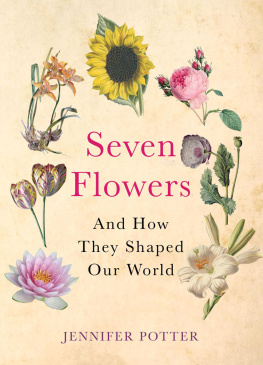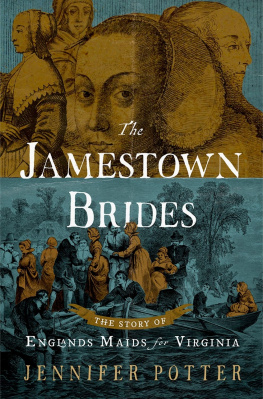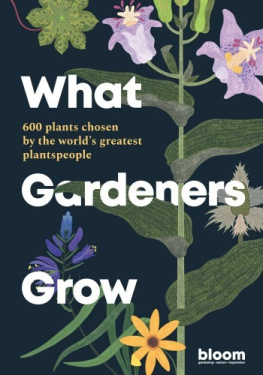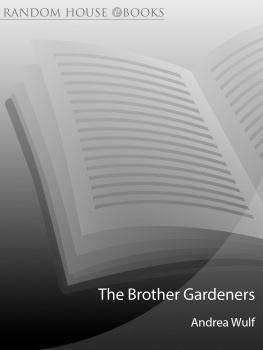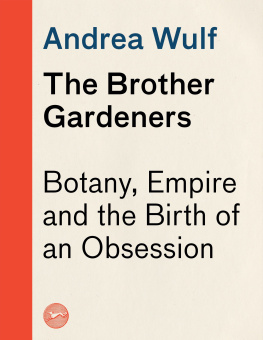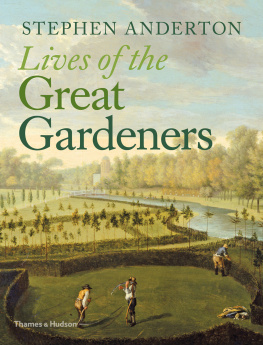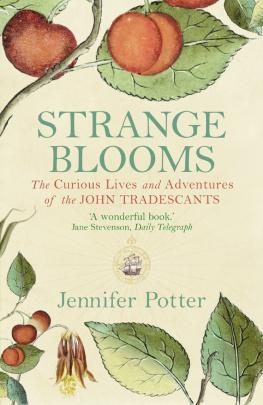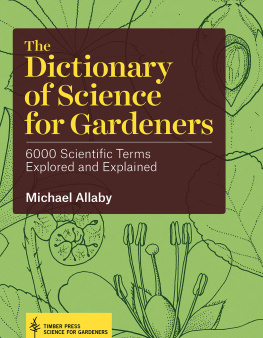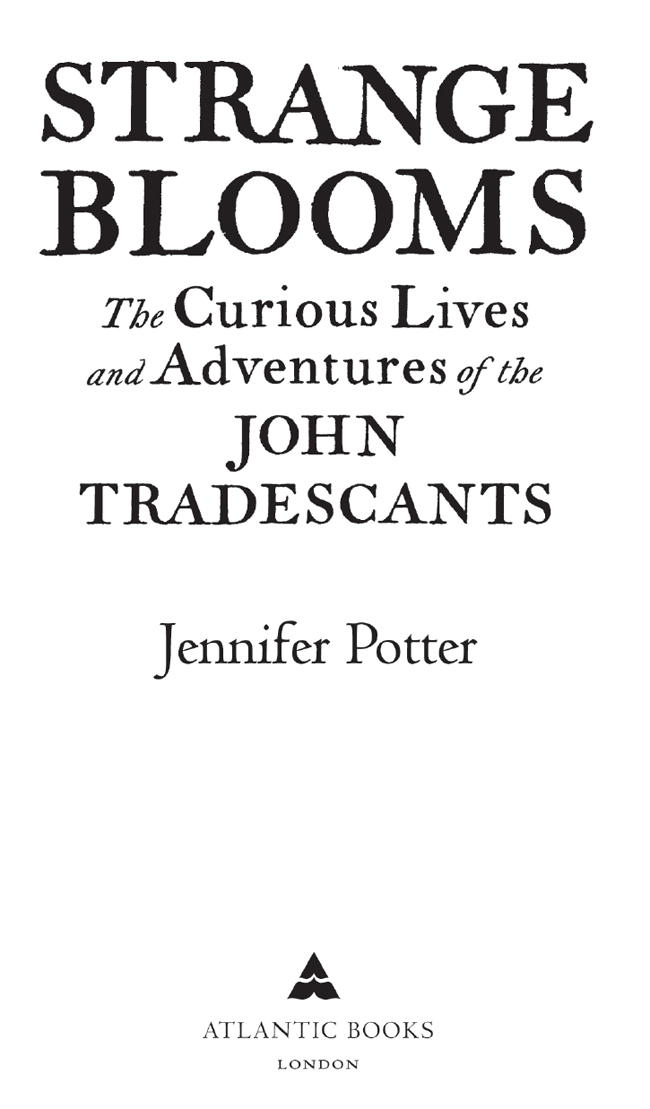STRANGE
BLOOMS
Jennifer Potter is the author of three novels and two works of non-fiction: Secret Gardens, and Lost Gardens, written to accompany the television series. She reviews regularly for the Times Literary Supplement and writes on travel and gardens for a wide range of national newspapers and magazines.
Potter uses the Tradescants to tell the story of these extraordinary times, in an account that will appeal to history and garden enthusiasts, and garden historians in particular. Diane Summers, Financial Times
Potters book shows that the Tradescants collections were part of a grander story. The natural and ethnological discoveries of Renaissance adventurers were exchanged and discussed by a pan-European community for the curious, and from their acquisitive drive for not only theoretical, but also practical knowledge, recognisably modern natural sciences emerged... A great story. Edward Holberton, New Statesman
Impressive... the picture it paints of seventeenth-century horticulture is fascinating. Charles Elliott, Literary Review
Beautifully illustrated and well-written. Simon May, Saga
Wonderfully engrossing, a real voyage of discovery into the rich and strange. I learnt a huge amount about plants, and even more about the culture of the seventeenth century in which they grew. A remarkable book about two remarkable men. Deborah Moggach
I love this book! As a gardener, I love it for the broad canvas of flowers it unfurls. And as a social historian, I love the portrait of John Tradescant pottering round Europe in the train of his militant master, picking up likely-looking plants as he goes. Liza Picard
A triumph of good research, sympathetic understanding and stylish writing. Charles Quest-Ritson
First published in Great Britain in hardback in 2006 by Atlantic Books, an imprint of Grove Atlantic Ltd.
This paperback edition published in 2007 by Atlantic Books.
Copyright Jennifer Potter 2006
The moral right of Jennifer Potter to be identified as the author of this work has been asserted in accordance with the Copyright, Designs and Patents Act of 1988.
All rights reserved. No part of this publication may be reproduced, stored in a retrieval system or transmitted in any form or by any means, electronic, mechanical, photocopying, recording or otherwise, without the prior permission of both the copyright owner and the above publisher of this book.
Every effort has been made to trace or contact all copyright-holders.
The publishers will be pleased to make good any omissions or rectify any mistakes brought to their attention at the earliest opportunity.
1 3 5 7 9 8 6 4 2
A CIP catalogue record for this book is available from the British Library.
978 1 84354 335 0
eISBN 978 1 78239 546 1
Designed by Nicky Barneby @ Barneby Ltd
Set in Jenson Classico
Printed in Great Britain
Atlantic Books
An imprint of Grove Atlantic Ltd
Ormond House
2627 Boswell Street
London WC1N 3JZ
For Chris, Lynn and Robert
We carry within us the wonders we seek without us.
Sir Thomas Browne, Religio Medici (1643)
Contents

. |
. |
. |
. |
. |
. |
. |
. |
. |
. |
. |
. |
. |
. |
. |
. |
. |
. |
. |
. |
. |
. |
. |
. |
. |
. |
List of Illustrations

Integrated Illustrations
First picture section
. |
. |
. |
. |
. |
. |
. |
. |
. |
Second picture section |
. |
. |
. |
. |
. |
. |
. |
Third picture section |
. |
. |
. |
. |
. |
. |
. |
. |
. |
The author and publishers are grateful to the following for permission to reproduce illustrations: , Bodleian Library, University of Oxford.
Acknowledgements

T his book would not have happened without the help, advice and encouragement of many people. First, I would like to thank my editor, Angus Mackinnon, for suggesting the idea and for having confidence that I could do it. Any biographer owes a special debt to earlier authors and I am particularly grateful to Prudence Leith-Ross for her interest and help with my researches. I have drawn most heavily on her work with the late Dr John Harvey to identify plants grown and introduced by both Tradescants.
Scholars and specialists were extraordinarily generous in sharing their expertise, none more so than Dr Arthur MacGregor, Senior Assistant Keeper at the Ashmolean Museum, Oxford. I thank him for his encyclopaedic knowledge, exactitude and good humour. His colleagues Dr Jon Whiteley and Kate Heard were both extremely helpful on the portraits and drawings in the museums collection. I have also benefited enormously from the insights, expertise and enthusiasm of Malgosia Nowak-Kemp at the Oxford University Museum of Natural History; David Sturdy, historian of Lambeth, Oxford and the Tradescants generally; Anne Jennings of the Museum of Garden History; Dr Barrie Juniper, Reader Emeritus in Plant Sciences and Fellow Emeritus of St Catherines College, Oxford; and historian David Marsh, who shared with me his researches into the Worshipful Company of Gardeners.
For help in appreciating the elder Tradescants time at Hatfield House, I wish to thank the Dowager Marchioness of Salisbury. Robin Harcourt Williams, Librarian and Archivist to the Marquess of Salisbury, guided me into the archives with great skill and patience, while outdoors, David Beaumont walked me back in time through the Hatfield landscape. At New Hall in Essex, once gardened by Tradescant for the Duke of Buckingham, I am similarly indebted to Sister Mary Magdalene of the Priory of the Resurrection.
Libraries were my home for nearly two years. At the Bodleian Library, Oxford, I would like to thank in particular Dr Bruce Barker-Benfield, Senior Assistant Librarian, and Mike Webb, Head of Cataloguing, Western Manuscripts. Both were generous with their time and knowledge, and helped to turn my visits there into a joy. I pay tribute to the unfailing efficiency and courtesy of staff in the Rare Books, Manuscripts and Maps reading rooms at the British Library, as well as to the staffs of the London Library, the City of Londons Guildhall Library, the Huguenot Library at University College London, the Caird Library of the National Maritime Museum and the Lindley Library of the Royal Horticultural Society. My debt is equally great to the many archives and record offices who hold information relating to the Tradescants and their times, and in particular the National Archives at Kew; Magdalen College, Oxford; local record offices in Kent, Northampton and Suffolk; Canterbury Cathedral Archives; the Royal College of Physicians; the London Metropolitan Archives; and the Minet Library in Lambeth, where Jon Newman has accumulated a wealth of knowledge about the Tradescants, generously shared. My thanks go also to Paul Pollak, archivist of the Kings School, Canterbury, and to Jane Lingard, whose unpublished MA dissertation for the Courtauld Institute of Art on the houses of Robert Cecil helped to shape my own understanding. Lectures on the Stuart Age at the National Maritime Museum in Greenwich and a study day on early planting by Mark Laird at the Architectural Association, London, gave me many new perspectives.


